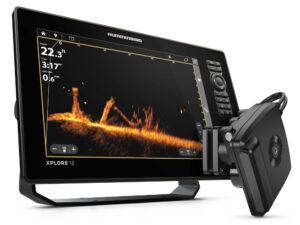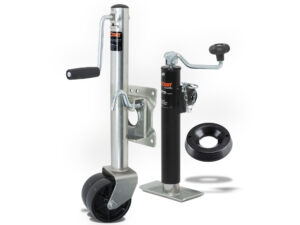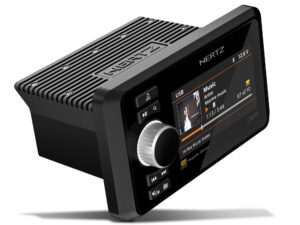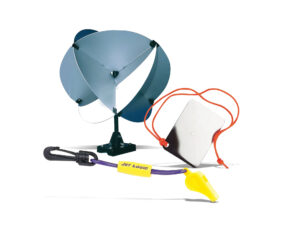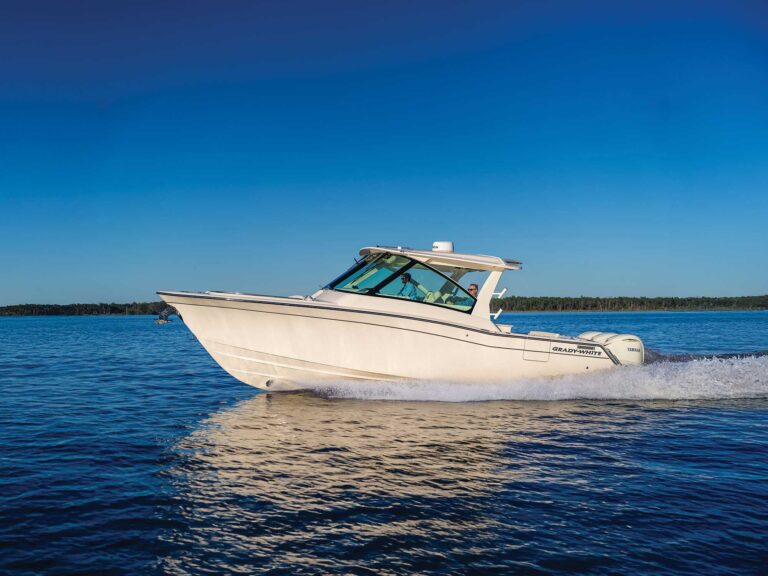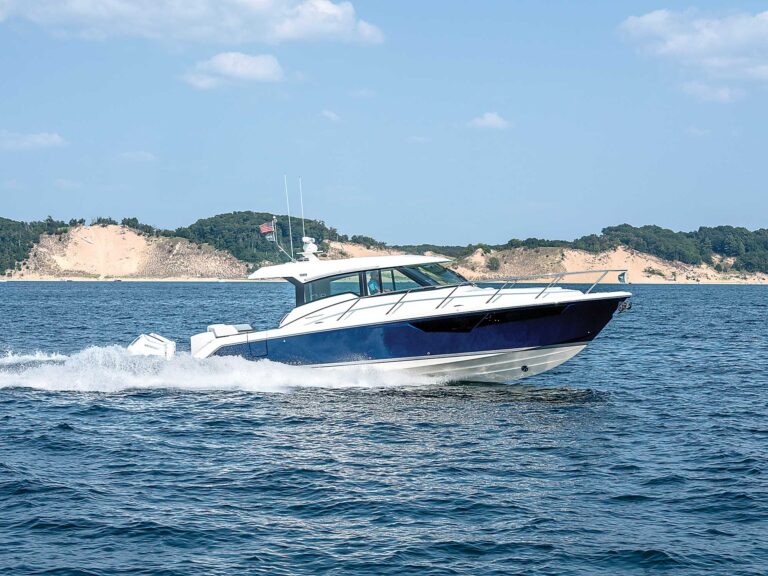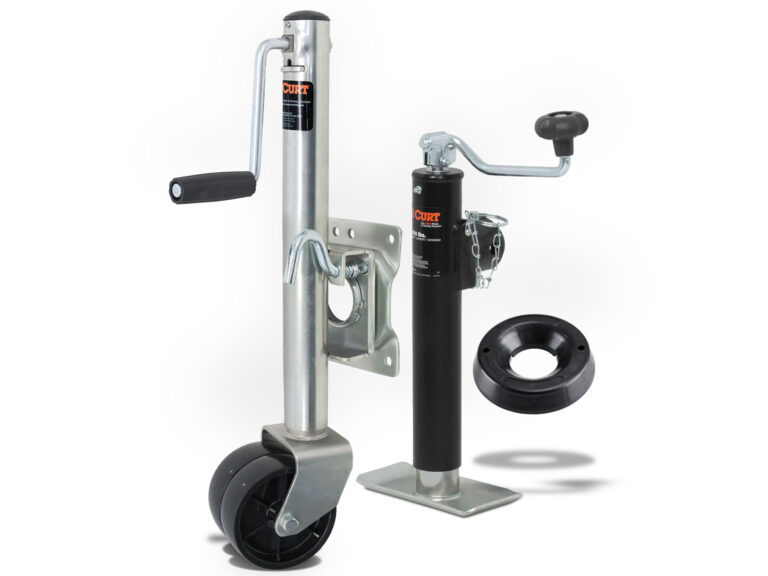There may be no other devices more necessary for rescues yet so hazardous to handle than SOLAS and U.S. Coast Guard-approved pyrotechnic marine rescue flares. For more than a decade, marine safety-equipment manufacturers have been making rescue strobes in white or red and laser flares in red and green, all with shelf lives of decades, not months, and some with the ability to continually blink out an SOS. They can burn for days, not seconds, and do it without caustic chemicals (currently becoming a regulatory problem in California) or flames to damage flesh, vessels or life rafts. But the all-electric devices have two important hurdles to jump: first, if they are bright enough to transmit a reliable distress signal and, second, if they can pass the Coast Guard and international regulatory approval process.
One electronic flare has made the leap, at least with the Coast Guard. The Weems and Plath SOS Distress Light was recently approved to satisfy recreational carriage requirements for nighttime signaling. It does not meet daytime-signal approval requirements, so it is packaged with a 3-square-foot orange distress flag approved for daytime use. Pyrotechnic red flares are approved for both day and night uses.
All that being said, even the unapproved signals would make an important and beneficial addition to your ditch bag as complementary backup to approved signals.
With that for background, it was natural for BoatingLAB to hold a few of these flares up to the … ahem … light.
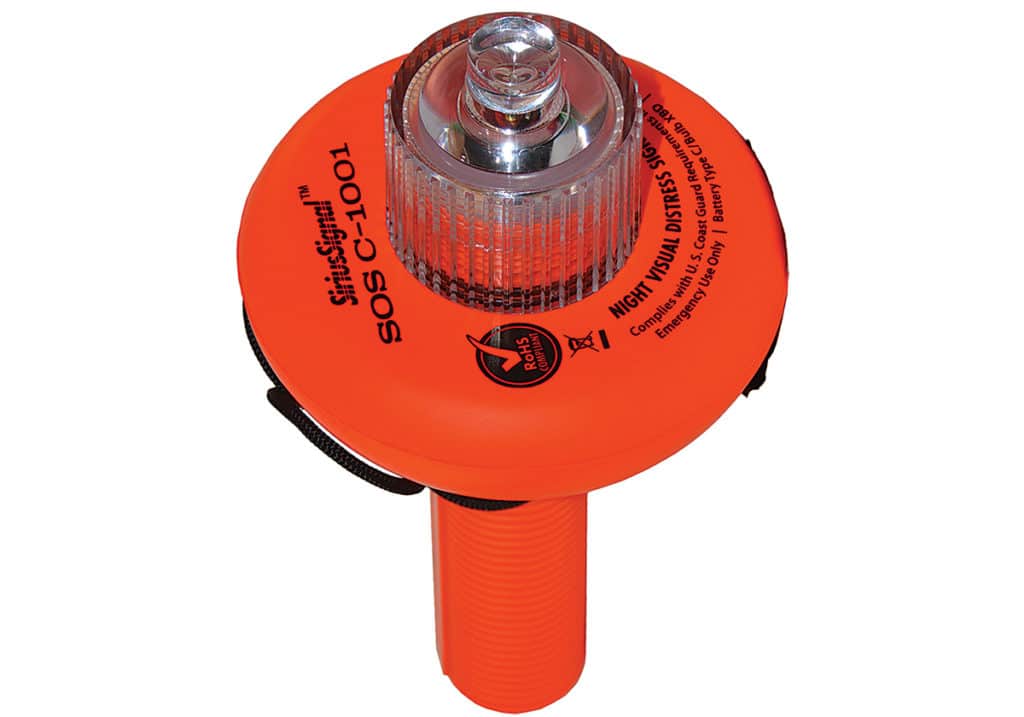
Weems and Plath SOS Distress Light No. C-1001
Weems and Plath SOS Distress Light No. C-1001
This patented floating device activates with a twist of its Fresnel lens, emitting an SOS signal reportedly visible as far as 10 nautical miles. It is recently (and currently the only) approved nonpyrotechnic device satisfying Coast Guard signal carriage requirements but only for recreational boats and only when accompanied with a day-signal orange flag. The latter eliminates the need to carry flammable, toxic chemical-fire or smoke flares.
Summary: This signal was simple to activate and required no additional assistance once activated. It is waterproof, floats and comes with a lanyard. The light was far brighter than we expected from a single LED. Spare batteries in the ditch bag add life, and in our examination, it appeared durable enough to stand up to bangs and knocks during storage and deployment.
Coast Guard Approved: Yes
SOLAS Approved: No
Shelf Life: Unlimited with periodic C-cell battery changes (3)
Burn-Time Specs: 60 hours
Visibility: 10 nautical miles
Powered By: 3 C-cells
Battery Replacement Cost: $6
Reflector Range: 210 yards; The farthest reflectors began to show diminishing light but were still surprisingly strong for a single LED.
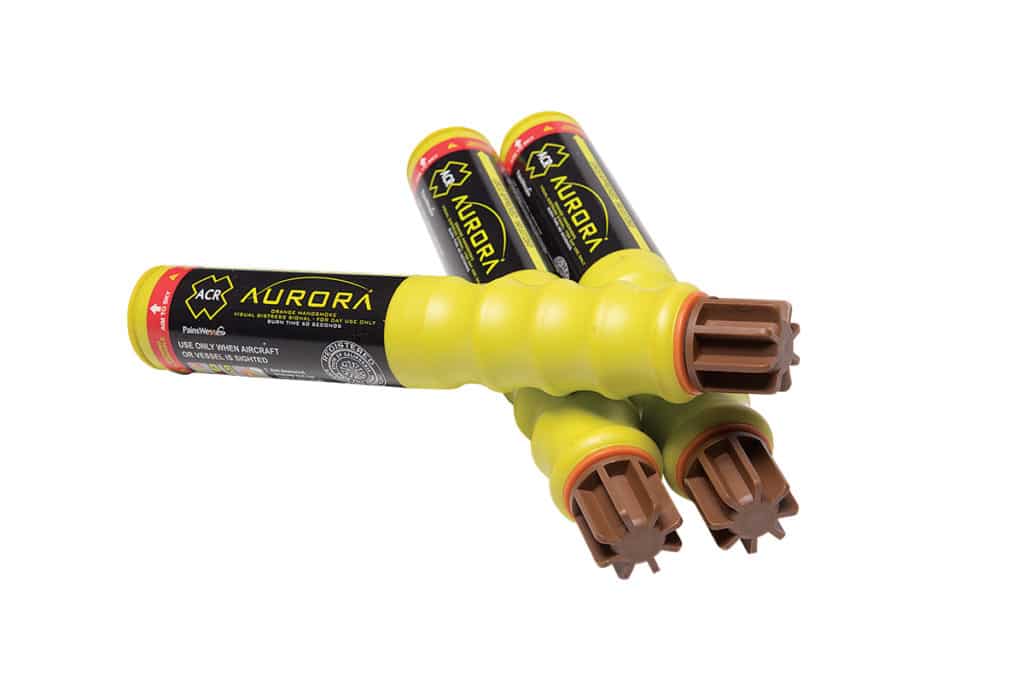
ACR Electronics, Inc. Aurora Red Hand Flares
ACR Electronics, Inc. Aurora Red Hand Flares (Smoke and Fire)
acrartex.com
In the business of developing rescue beacons and signals for over 50 years, this company has myriad rescue equipment, ranging from flares to EPIRBs and AIS systems. The unique shape of the Aurora flare assures a safe hold and fumble-free ignition. The incendiary compound is contained in a steel tube to reduce drips and sparks. The red flare ignites and remains ignited under water. The larger smoke flare needs to be held clear of the water.
Summary: The ACR Aurora is probably the simplest pyrotechnic flare to use thanks to its well-designed handle and easy-to-use igniter. Sparks and fire hazards are minimized by its design. It is so bright, we lost our night vision. It created enough smoke to give us difficulty measuring reflective distance. After seeing how bright it was, we were surprised about its advertised range of just 3 nautical miles.
Coast Guard Approved: Yes
SOLAS Approved: No
Shelf Life: 42 months from manufacture
Burn-Time Specs: 60 seconds
Visibility: 3 nautical miles
Powered By: Pyrotechnic
Battery Replacement Cost: NA
Reflector Range: 210-plus yards
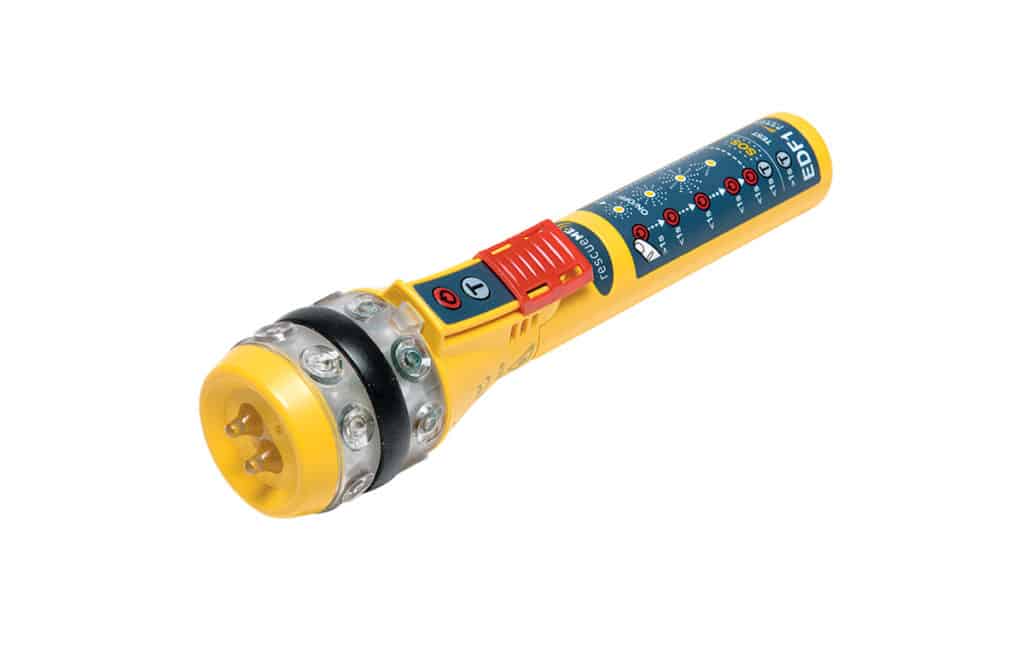
Ocean Signal RescueME EDF1
The EDF1 operates in several light modes, ranging from economy to high to ultra. It emits a red emergency strobe light in a 360-degree hemisphere broadly visible from land, sea and air. When it’s fastened to a vest, it also has a “beam” function that operates the LEDs only on one side. A trigger guard protects the device from accidental activation to protect batteries. An SOS setting makes distress calling simple.
Summary: The device is easy to use, the instructions are graphically printed right on it, and it projects light in a hemispherical orientation to be visible above and at 360 degrees. We liked the automatic SOS function. It doesn’t float and can be tethered to a vest but requires attention to keep it visible on the water’s surface.
Coast Guard Approved: No
SOLAS Approved: No
Shelf Life: 5 years (per warranty)
Burn-Time Specs: 6 hours
Waterproof: Yes (10 meters)
Visibility: Up to 7 nautical miles
Powered By: Lithium-ion battery
Battery Replacement Cost: $40
Reflector Range: 150 yards
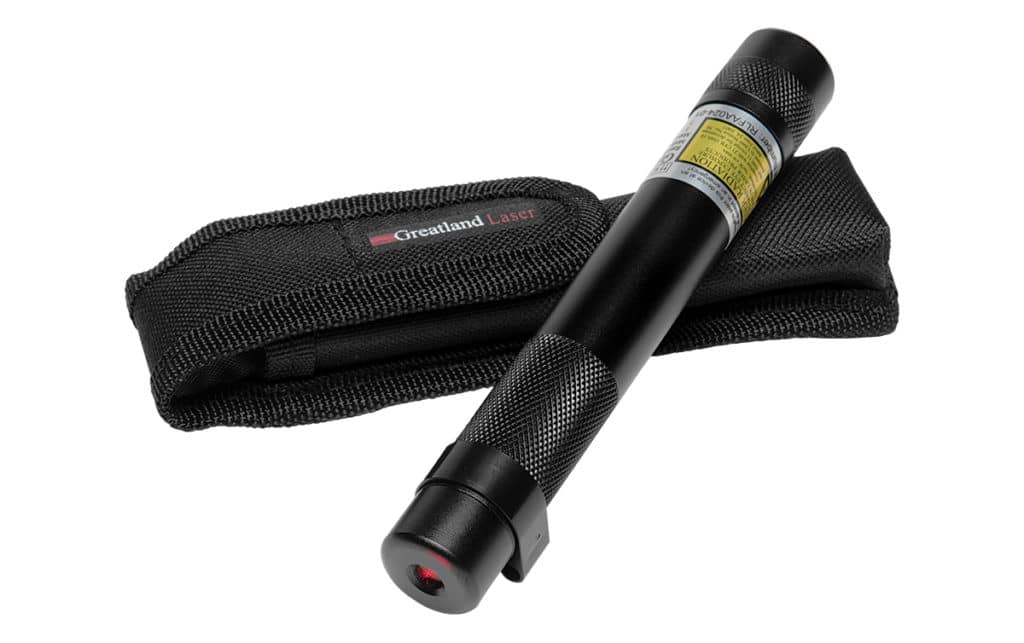
Greatland Green (GLF) and Red (RLF) Rescue Laser Flares
Greatland Green (GLF) and Red (RLF) Rescue Laser Flares
greatlandlaser.com
In 2012, HR 658 changed federal laws, specifically legalizing the use of lasers as distress signals to summon aviators or passing ships, and for good cause — no handheld signal is more efficient at drawing attention or has a longer range in clear air than a laser. Greatland’s lasers have peep sights along the barrel to direct the 5-degree red beam, which broadens to more than a mile at full range. The brighter 3-degree green beam has a fanned shape for the longest powerful range.
Summary: The dual-battery green laser flare clearly landed the brightest electric-powered illumination on our targets — but at the cost of battery life. The red dual-battery signal was visibly dimmer, but it brightly illuminated the farthest target and had power to spare. Batteries are easily acquired and stored AA-style.
Coast Guard Approved: No
SOLAS Approved: No
Shelf Life: Unlimited with periodic AA-cell battery changes (2)
Burn-Time Specs: 72 hours (red); 5 hours (green)
Visibility: 17 nautical miles (red); 26 nautical miles (green)
Powered By: 2 AA batteries
Battery Replacement Cost: $3 to $6 (for AA alkaline)
Reflector Range: 210-plus yards
How We Tested
Fire
We had to pit pyrotechnic red flares against the new LED and laser flares. To do that, we conferred with local safety-enforcement personnel and secured permission to test the flares on a local golf-course fairway. There is nothing illegal about setting off a flare, however, launching one and then finding we’d started an actual search-and-rescue event — well, we didn’t want that to happen.
Measuring Light Range
A light loses apparent intensity to the viewer over distance. We wanted to see how much, so we set up our “life raft” on the first tee of the Winter Park Golf Course in Florida. It’s roughly a 200-yard shot to the green. We set up reflective signs at 30 yards and then every 20 yards after that for a total of 210 yards. Then we activated each device one at a time and observed the results.

